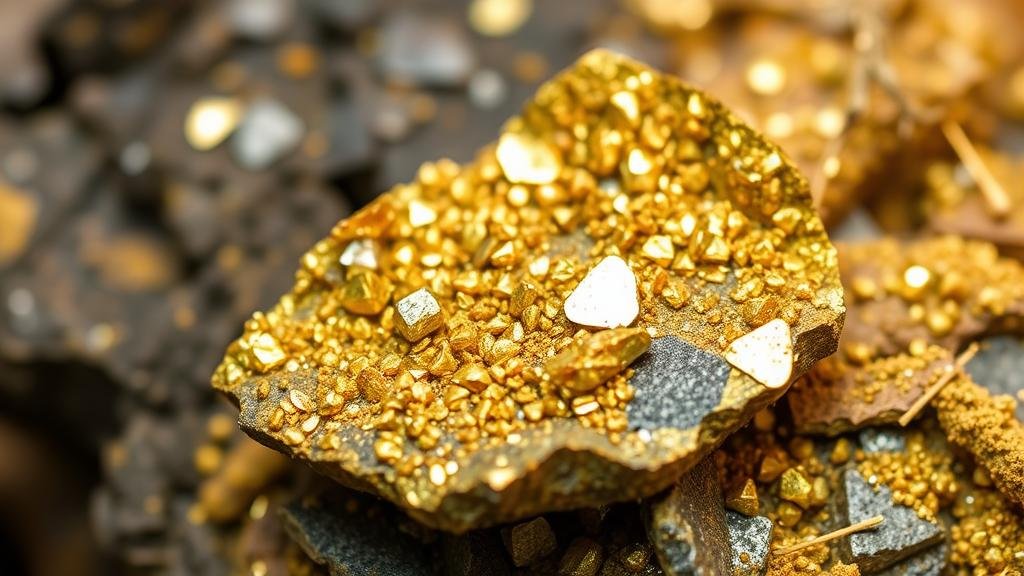Identifying Chalcopyrite in Hard Rock Deposits and Its Copper Potential
Identifying Chalcopyrite in Hard Rock Deposits and Its Copper Potential
Chalcopyrite (CuFeSâ‚‚) is a prominent copper-bearing mineral that plays a significant role in hard rock mining due to its substantial copper content. Its identification in ore deposits is crucial for mining operations and resource exploration. This article delves into identifying chalcopyrite in hard rock deposits, evaluating its copper potential, and discussing practical methodologies for effective exploration.
Understanding Chalcopyrite
Chalcopyrite is characterized by its brass-yellow coloration and metallic luster. It is often considered the primary source of copper in many mining operations globally. With a copper content ranging from 34.6% by weight, it is essential in various industrial applications, including electrical wiring, plumbing, and renewable energy technologies.
Physical and Chemical Properties
To accurately locate chalcopyrite, it is vital to understand its key properties:
- Color: Brass-yellow, which may tarnish to an olive green or blue hue.
- Hardness: Ranges between 3.5 and 4 on the Mohs scale.
- Streak: Produces a greenish-black streak when scratched on a porcelain plate.
- Specific Gravity: Typically around 4.1 to 4.3.
These physical attributes can assist geologists and miners in identifying chalcopyrite among other minerals present in hard rock deposits.
Geological Setting
Chalcopyrite is typically found in a range of geological environments, often associated with granite, diorite, or other igneous rocks. It is commonly found in:
- Porphyry copper deposits, which are large, low-grade ore bodies.
- Volcanogenic massive sulfide (VMS) deposits, typically formed at mid-ocean ridges.
- Skarn deposits, resulting from contact metamorphism between limestone and intrusive igneous bodies.
Understanding the geological context of chalcopyrite can help in predicting its occurrence and assessing copper potential in exploration projects.
Methods for Identifying Chalcopyrite
There are several methods used for identifying chalcopyrite within hard rock deposits:
- Field Identification: Geologists often use visual inspection techniques in the field to identify chalcopyrite based on color and luster.
- Panning: This method involves grinding rock samples and using a pan to separate heavier minerals, including chalcopyrite, from lighter materials.
- Laboratory Analysis: X-ray fluorescence (XRF) analysis can provide quantifiable data on elemental composition, confirming the presence of copper, iron, and sulfur.
Employing a combination of these methods increases the reliability of chalcopyrite identification and aids in the assessment of copper reserves.
Copper Potential and Economic Viability
The copper potential of chalcopyrite deposits is influenced by several factors, including:
- Grade of Ore: Higher quantities of chalcopyrite directly correlate to increased copper yields. For example, a deposit with more than 0.5% copper content is generally considered economically viable for extraction.
- Market Demand: The global demand for copper, driven by technology and infrastructure development, enhances the economic feasibility of chalcopyrite mining operations. According to the International Copper Study Group, the world production of copper is expected to surpass 25 million metric tons by 2025.
- Processing Costs: The extraction and processing technologies impact the overall economic benefit. Modern techniques such as bioleaching explored to increase efficiency at lower costs.
Real-World Applications and Case Studies
The expression of chalcopyrites copper potential can be observed in established mining operations worldwide. For example:
- Escondida Mine: Located in Chile, it is one of the largest copper-producing mines globally, primarily containing chalcopyrite deposits and producing roughly 1.2 million metric tons per year.
- Rowan Mine: In the United States, a significant portion of copper production is sourced from chalcopyrite-rich deposits, showcasing the minerals potential in regional economies.
These examples illustrate the successful exploitation of chalcopyrite deposits, underscoring its importance in the copper supply chain.
Conclusion and Actionable Takeaways
Identifying chalcopyrite within hard rock deposits is a critical process for assessing copper potential in mining. By understanding the minerals physical properties, geological settings, and identification techniques, industry professionals can make informed decisions regarding exploration and extraction practices. As global copper demand continues to rise, the economic viability of chalcopyrite-rich deposits remains significant. Stakeholders are encouraged to invest in advanced technological methods for more accurate identification and efficient processing to maximize potential benefits from these valuable resources.



